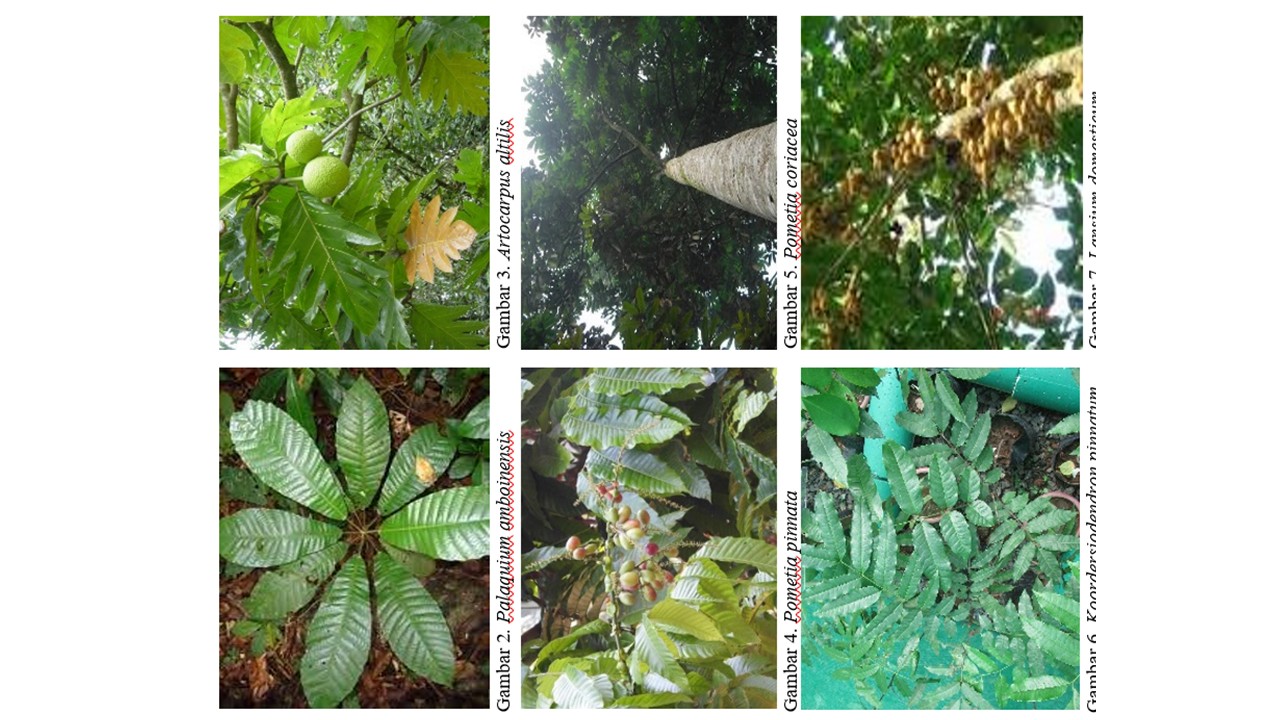Water Springs and Abundance of Vegetation in the Table Mountain Natural Tourism Park, Manokwari Regency
DOI:
https://doi.org/10.46252/jsai-fpik-unipa.2025.Vol.9.No.3.462Keywords:
Diversity, MMNTP, Springs Haracteristics, Vegetation, WaterAbstract
Water is a vital need for every life, so if there is no water there will certainly be no life. This research aims to determine the pattern of springs, diversity and similarity of types around the springs. The research method uses surveys and sampling techniques. Research results of Meja Mountain Natural Tourism Park (MMNTP) from 9 springs have 7 different spring patterns. The largest water discharge in the spring pattern that comes out between the rocks, while the smallest water comes out of seepage of soil pores. The largest water discharge is located in Manggoapi with coordinates -0.847744, 134.069008. While the smallest water discharge comes from springs that emerge from the ground located in Brawijaya with coordinates -0.854717, 134.075233. The woody vegetation type diversity index has a high value which reflects the diversity of types in the MMNTP. Meanwhile, the similarity index is higher than the difference, indicating that woody vegetation has similarities between the observation plots. Establish from seedlings to dominant trees including Palaquium amboinensis, Artocarpus altilis, Lansium domesticum, Pometia coriacea, Pometia pinnata, and Koordersiodendron pinnatum. The six types are thought to have suitable habitats, need lots of water and have related relationships.
Downloads
References
Agustini, N.T., Ta’alidin, z., dan Purnama D. 2016: Struktur Komunitas Mangrove Di Desa Kahyapu Pulau Enggano. Jurnal Enggano Vol. 1(1), 19-31
Anam, M.B., Kusumayudha,S.B., Yudono, A.R.A. 2020. Pengelolaan Mata Air Karst Sebagai Sumber Air Domestik Di Dusun Duwet, Desa Purwodadi, Kecamatan Tepus, Gunung Kidul, D.I. Yogyakarta. Jurnal Mineral Energi &Lingkungan. 4(2) 57-70
Arnell, N. W. (2019). Climate change impacts on river flows in Britain: The UK climate projections 2009. Hydrological Processes, 33(8), 1221-1238.
Basna, N., Marsono, J. ,Gunawran, T., Irham. 2012. Model Pengelolaan Lingkungan Taman Wisata Alam Gunung Mbja Manokwari Papua Barat (Model Environmental Management of Meja Mountain Natural Manokwuri West Papua). J. MANUSIA DAN LINGKUNGAN, Vol. 19(3),273-284
Bruijnzeel, L. A. (2004). Hydrological functions of tropical forests: Not seeing the soil for the trees?. Agriculture, Ecosystems & Environment, 104(1), 185- 228.
CNBC Indonesia .2024. Jokowi di World Water Forum Bali: No Water, No Life, No Growth.
Dewi, M. A., Sugiarto, M., Rachmawati, I., & Issundari, S. (2018). Noken: Women Empowerment a Tourism Industry in Papua. Proceedings of the 5th International
Conference on Community Development (AMCA 2018). 2018 3rd International
Conference on Education, Sports, Arts and Management Engineering (ICESAME
, Quezon City, Philippines. https://doi.org/10.2991/amca-18.2018.61
Elevitch, C. R., & Wilkinson, K. M. (Eds.). (2000). Agroforestry guides for Pacific islands (pp. 1-240). Holualoa, Hawaii: Permanent Agriculture Resources.
Fenner, M., & Thompson, K. (2005). The ecology of seeds. Cambridge University Press.
Ghimire, C. P., & Bruijnzeel, L. A. (2011). Trends in rainfall and rainfall-related extremes in the eastern Himalayas: A review. Aquatic Sciences, 73(2), 211- 227.
Grime, J. P. (2006). Plant strategies, vegetation processes, and ecosystem properties. John Wiley & Sons.
Kartawinata K., Samsoedin, I., Heriyanto, M., Afriastini, J.J. 2004. A Tree Species Inventory In A One-Hectare Plot At The Batang Gadis National Park, North Sumatra, Indonesia. A Journal On Taxonomic Botany, Plant Sociology And Ecology Vol. 12(2): 129-204.
Keddy, P. A. (2007). Plants and vegetation: origins, processes, consequences. Cambridge University Press.
Kehlenbeck, K., Rohnenbrg, H., Preissledanz, J., & Krauss, U. (2011). Distributing plant resources in orchards supplemented with high density planting of timber and firewood trees: A case study from Eastern Indonesia. Forests, Trees and Livelihoods, 20(4), 241-251.
Laurans M., Hérault B., Vieilledent G., & Vincent G. (2014). vertical
stratification reduces competition for light in dense tropical forests. Forest Ecology and Management. 329:79- 88.
Leck, M. A., Parker, V. T., & Simpson, R. L. (Eds.). (2008). Seedling ecology and evolution. Cambridge University Press.Ecology 2nd ed. New Delhi: Oxford and IBH Publishing Co.
Lekitoo K, Peday HFZ, Panambe N, Cabuy RL. 2017. Ecological and ethnobotanical facet of
‘Kelapa Hutan’ (Pandanus spp.) and perspectives towards its existence and benefit. International Journal of Botany. 13: 103-114

Downloads
Published
How to Cite
Issue
Section
License
Copyright (c) 2025 Mahmud Mahmud, Syaiful Rahmanto Rahmanto, Francina F. Kesaulija Kesaulija, La Ode Muhlis Muhlis

This work is licensed under a Creative Commons Attribution-ShareAlike 4.0 International License.


















